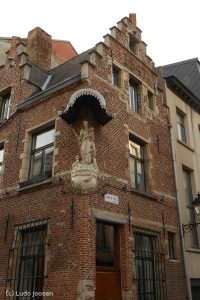 Maybe you have already noticed them while walking through the streets of the city, or maybe your eyes were glued to the shop windows and all the goodies they had on display, anyway if you look up at almost any corner of the historical city center, you will notice a Madonnastatue. And no, it is not the one who called her daughter Lourdes, but the one who gave birth to Jesus Christ.
Maybe you have already noticed them while walking through the streets of the city, or maybe your eyes were glued to the shop windows and all the goodies they had on display, anyway if you look up at almost any corner of the historical city center, you will notice a Madonnastatue. And no, it is not the one who called her daughter Lourdes, but the one who gave birth to Jesus Christ.
Spread all over the inner town some 170 statues have survived the brutal anger of the French revolutionary troops and the greedy building boom of the 1970’s. Many more used to adorn the inner city. Why are there so many of these statues you might wonder. Well, there are different reasons.
The first and probably most important reason is that Our Lady is the city’s patron: the main church is devoted to her, and her image can also be seen on the most prominent place in the city hall.
The second reason has to do with the period in which most of these statues originated. I use the term originated because some of the statues have been newly made, mostly in the 19th century, some have been restored in recent years, some are copies of the original ones and some still are the original ones, dating back to the 17th and 18th century.
Antwerp had a first Golden Age in the 16th century: it was the most important city in the north of Europe and merchants from all over the world had their seat in Antwerp. Merchants usually are tolerant people: they do not really care what colour your skin is or what you believe in, they only want to know if they can rely on you when doing business. So this sixteenth century city quickly came under the influence of Lutheranism, Calvinism, Anabaptism and other forms of religious reformation. This was all brutally put down by Philippe II, the archcatholic king of Spain who also reigned over the Netherlands.
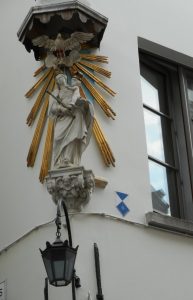 In 1585 the city fell in the hands of the Spanish army led by Farnese which led to the separation of the Netherlands: the southern part remained Spanish and catholic, the northern part became a republic under the name of United Provinces. Many merchants left the city and fled to northern cities like Amsterdam and Haarlem, which eventually took over the leading role of Antwerp in European trade.
In 1585 the city fell in the hands of the Spanish army led by Farnese which led to the separation of the Netherlands: the southern part remained Spanish and catholic, the northern part became a republic under the name of United Provinces. Many merchants left the city and fled to northern cities like Amsterdam and Haarlem, which eventually took over the leading role of Antwerp in European trade.
In the seventeenth century our city became catholic again and was an important centre of contra-reformation. The presence of the Jesuits played an important part in the process and it was they who had the statue of Brabo, a legendary figure who is linked to the origins of the city, replaced by a statue of Our Lady in the city hall. Mary was a central figure in contra-reformation, so her image appeared on many a street corner.
Very often the statue has a lantern, which is a third reason why the statues adorn street corners. As street lights were missing in the 17th and 18th century city, the lanterns provided some kind of light and some kind of safety for people who had to walk home through the dark streets.
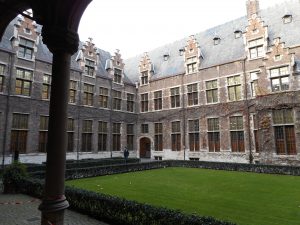



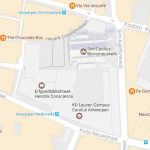


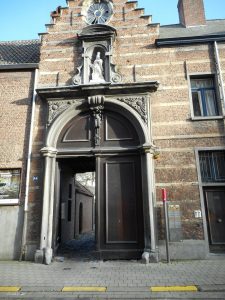
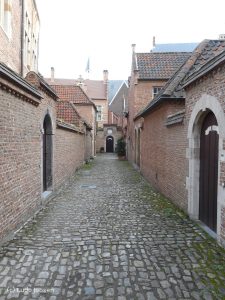
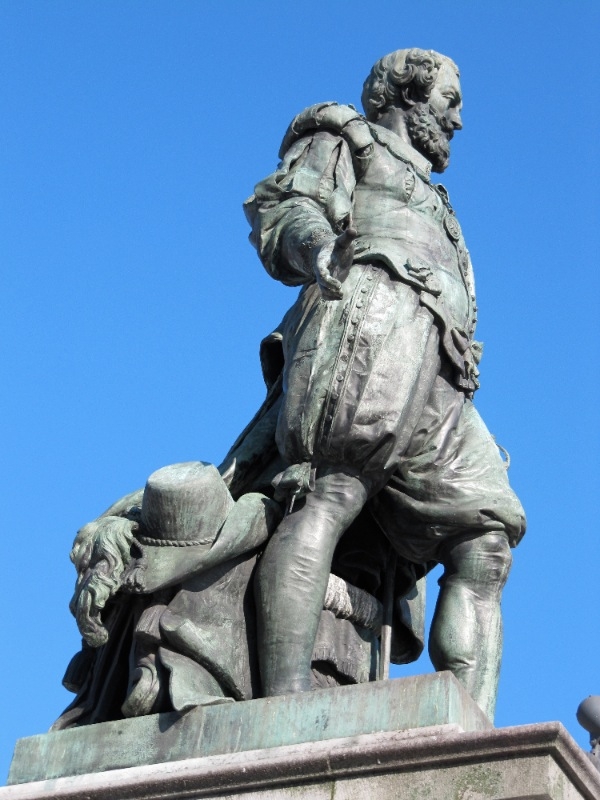
 Maybe you have already noticed them while walking through the streets of the city, or maybe your eyes were glued to the shop windows and all the goodies they had on display, anyway if you look up at almost any corner of the historical city center, you will notice a Madonnastatue. And no, it is not the one who called her daughter Lourdes, but the one who gave birth to Jesus Christ.
Maybe you have already noticed them while walking through the streets of the city, or maybe your eyes were glued to the shop windows and all the goodies they had on display, anyway if you look up at almost any corner of the historical city center, you will notice a Madonnastatue. And no, it is not the one who called her daughter Lourdes, but the one who gave birth to Jesus Christ. In 1585 the city fell in the hands of the Spanish army led by Farnese which led to the separation of the Netherlands: the southern part remained Spanish and catholic, the northern part became a republic under the name of United Provinces. Many merchants left the city and fled to northern cities like Amsterdam and Haarlem, which eventually took over the leading role of Antwerp in European trade.
In 1585 the city fell in the hands of the Spanish army led by Farnese which led to the separation of the Netherlands: the southern part remained Spanish and catholic, the northern part became a republic under the name of United Provinces. Many merchants left the city and fled to northern cities like Amsterdam and Haarlem, which eventually took over the leading role of Antwerp in European trade.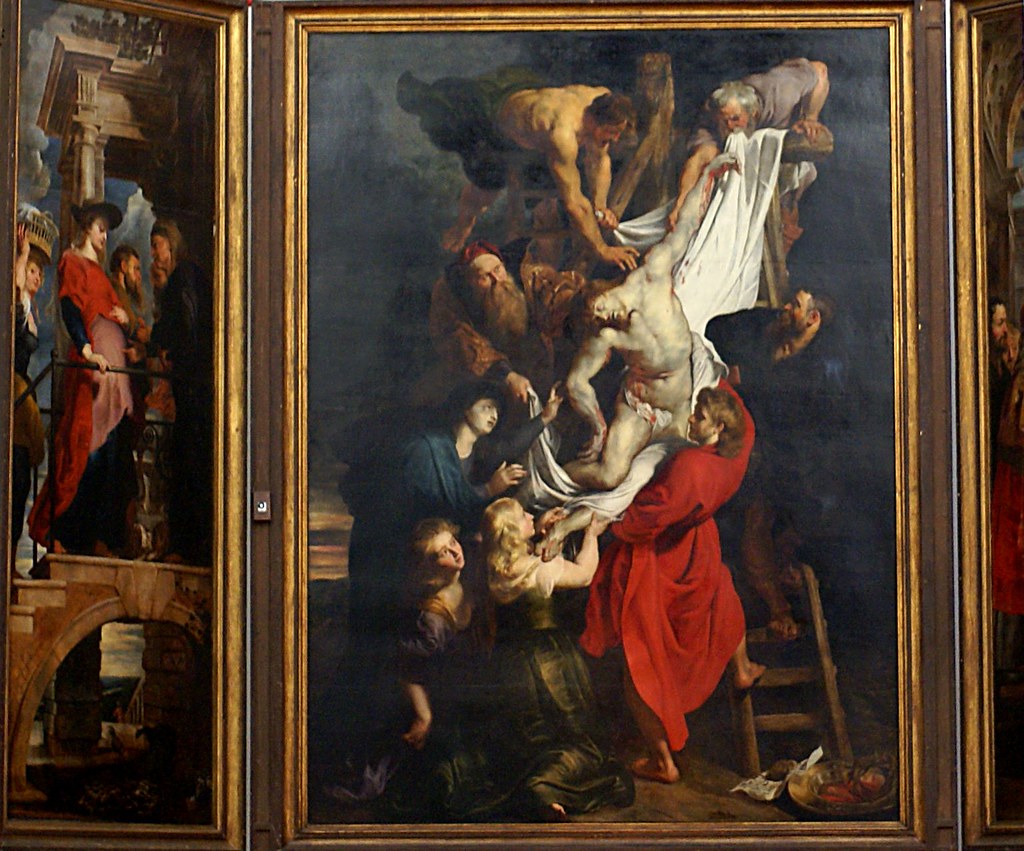 Although a number of historical churches have vanished (e.g. the Walburgischurch in the very center of the old town, and the church belonging to the St-Michael’s cloister in the environment of the Kloosterstraat), we still have 5 churches with a rich historical background.
Although a number of historical churches have vanished (e.g. the Walburgischurch in the very center of the old town, and the church belonging to the St-Michael’s cloister in the environment of the Kloosterstraat), we still have 5 churches with a rich historical background. The youngest of the historical churches is the Jesuits’ church: St-Carl-Borromeus. Its façade is a fine example of baroque art, but only inside will you be able to feel the effect of baroque completely, especially when you enter the Houtappel chapel (to your right facing the main altar). Also this church is closely connected with Rubens as there are clear signs that Rubens had a hand in the design of both the façade and the tower. Originally the aisles left and right had their ceilings painted by Rubens, but a fire in 1718 destroyed all of these paintings. Rubens also painted two large canvases for the main altar, but the originals are now on display in Vienna. The really unique thing about this church is that the painting adorning the main altar can be switched. The original device to perform this feat is still active and is being used four times a year.
The youngest of the historical churches is the Jesuits’ church: St-Carl-Borromeus. Its façade is a fine example of baroque art, but only inside will you be able to feel the effect of baroque completely, especially when you enter the Houtappel chapel (to your right facing the main altar). Also this church is closely connected with Rubens as there are clear signs that Rubens had a hand in the design of both the façade and the tower. Originally the aisles left and right had their ceilings painted by Rubens, but a fire in 1718 destroyed all of these paintings. Rubens also painted two large canvases for the main altar, but the originals are now on display in Vienna. The really unique thing about this church is that the painting adorning the main altar can be switched. The original device to perform this feat is still active and is being used four times a year.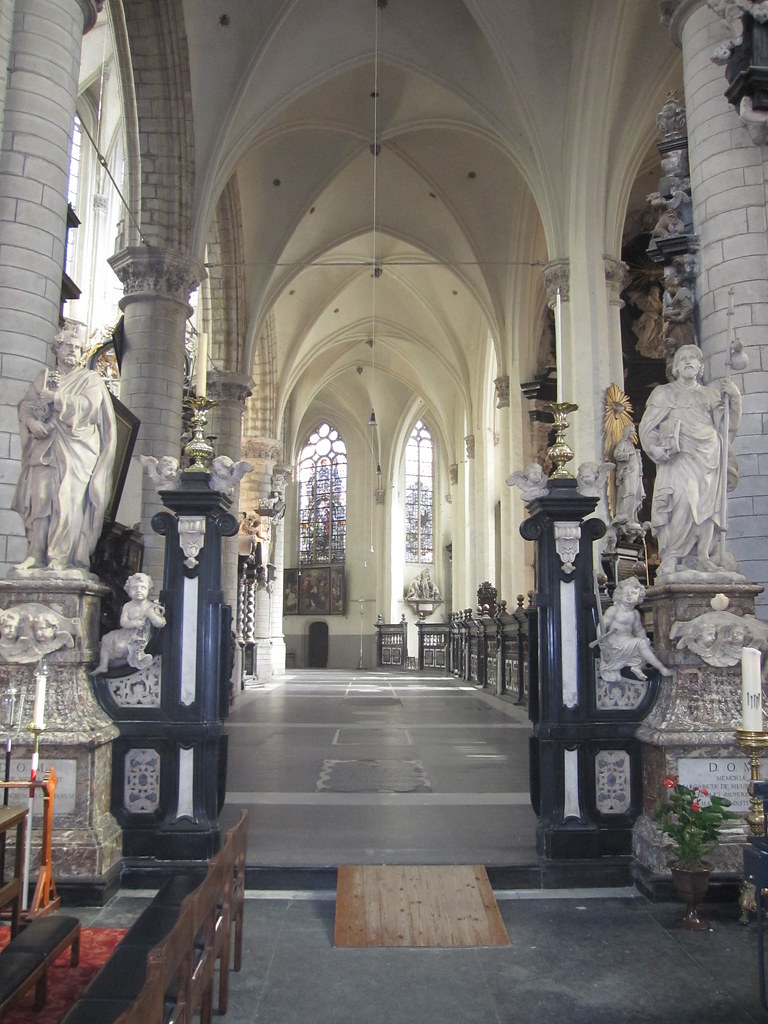 Another church linked with Rubens is St-James’s, located near St-Jacobsmarkt, entrance via the southern aisle in Lange Nieuwstraat. Here the master is buried beneath a painting of his own choice. This church boasts a very impressive main altar in baroque style and an organ on which the young Mozart one gave a concert as he passed Antwerp in the company of his father and his sister.
Another church linked with Rubens is St-James’s, located near St-Jacobsmarkt, entrance via the southern aisle in Lange Nieuwstraat. Here the master is buried beneath a painting of his own choice. This church boasts a very impressive main altar in baroque style and an organ on which the young Mozart one gave a concert as he passed Antwerp in the company of his father and his sister.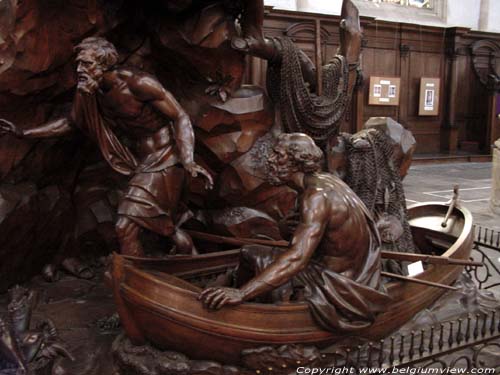 Last but not least there’s St-Andrew’s (entrance Waaistraat) which boasts what is probably the most fascinating pulpit in the world.
Last but not least there’s St-Andrew’s (entrance Waaistraat) which boasts what is probably the most fascinating pulpit in the world.